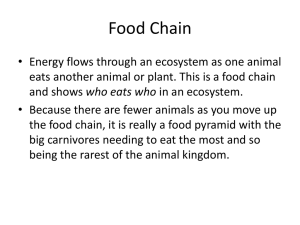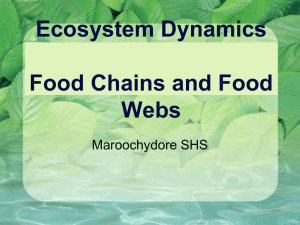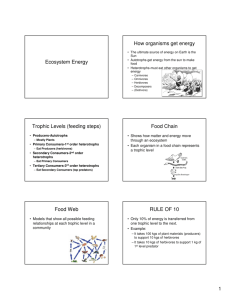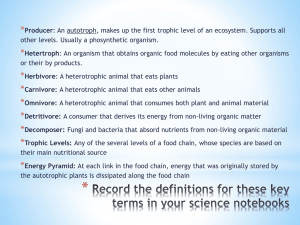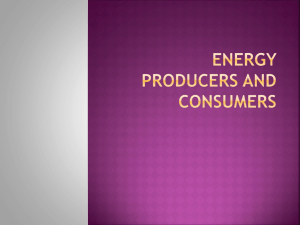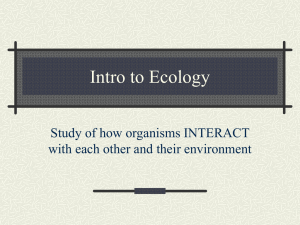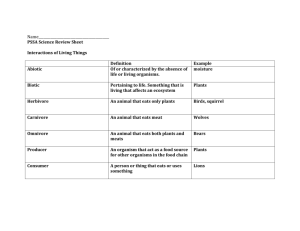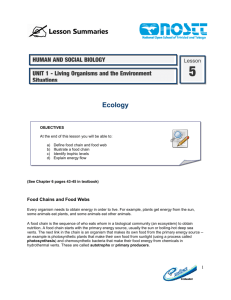Food Webs: Energy and Nutrient Transfer From One Organism to
advertisement
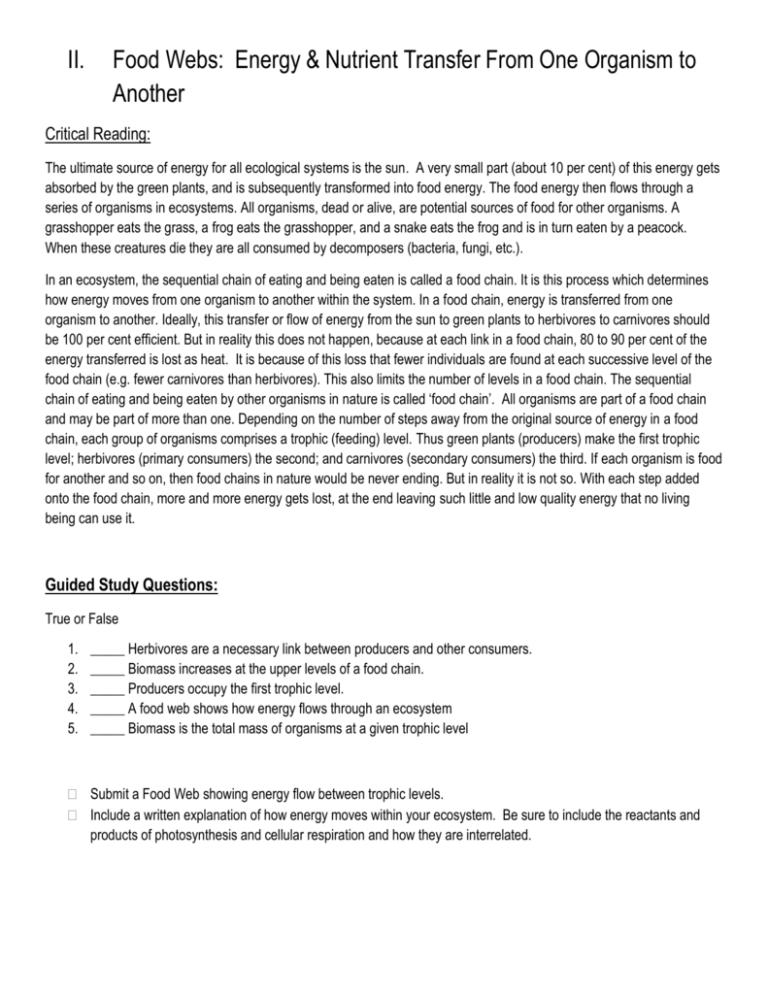
II. Food Webs: Energy & Nutrient Transfer From One Organism to Another Critical Reading: The ultimate source of energy for all ecological systems is the sun. A very small part (about 10 per cent) of this energy gets absorbed by the green plants, and is subsequently transformed into food energy. The food energy then flows through a series of organisms in ecosystems. All organisms, dead or alive, are potential sources of food for other organisms. A grasshopper eats the grass, a frog eats the grasshopper, and a snake eats the frog and is in turn eaten by a peacock. When these creatures die they are all consumed by decomposers (bacteria, fungi, etc.). In an ecosystem, the sequential chain of eating and being eaten is called a food chain. It is this process which determines how energy moves from one organism to another within the system. In a food chain, energy is transferred from one organism to another. Ideally, this transfer or flow of energy from the sun to green plants to herbivores to carnivores should be 100 per cent efficient. But in reality this does not happen, because at each link in a food chain, 80 to 90 per cent of the energy transferred is lost as heat. It is because of this loss that fewer individuals are found at each successive level of the food chain (e.g. fewer carnivores than herbivores). This also limits the number of levels in a food chain. The sequential chain of eating and being eaten by other organisms in nature is called ‘food chain’. All organisms are part of a food chain and may be part of more than one. Depending on the number of steps away from the original source of energy in a food chain, each group of organisms comprises a trophic (feeding) level. Thus green plants (producers) make the first trophic level; herbivores (primary consumers) the second; and carnivores (secondary consumers) the third. If each organism is food for another and so on, then food chains in nature would be never ending. But in reality it is not so. With each step added onto the food chain, more and more energy gets lost, at the end leaving such little and low quality energy that no living being can use it. Guided Study Questions: True or False 1. 2. 3. 4. 5. _____ Herbivores are a necessary link between producers and other consumers. _____ Biomass increases at the upper levels of a food chain. _____ Producers occupy the first trophic level. _____ A food web shows how energy flows through an ecosystem _____ Biomass is the total mass of organisms at a given trophic level Submit a Food Web showing energy flow between trophic levels. Include a written explanation of how energy moves within your ecosystem. Be sure to include the reactants and products of photosynthesis and cellular respiration and how they are interrelated.

